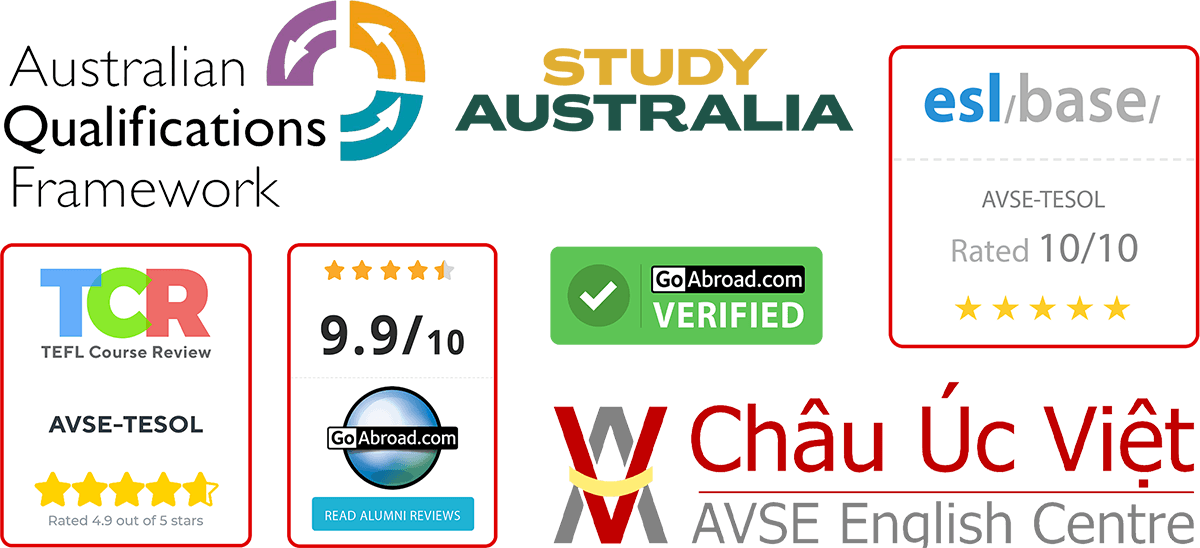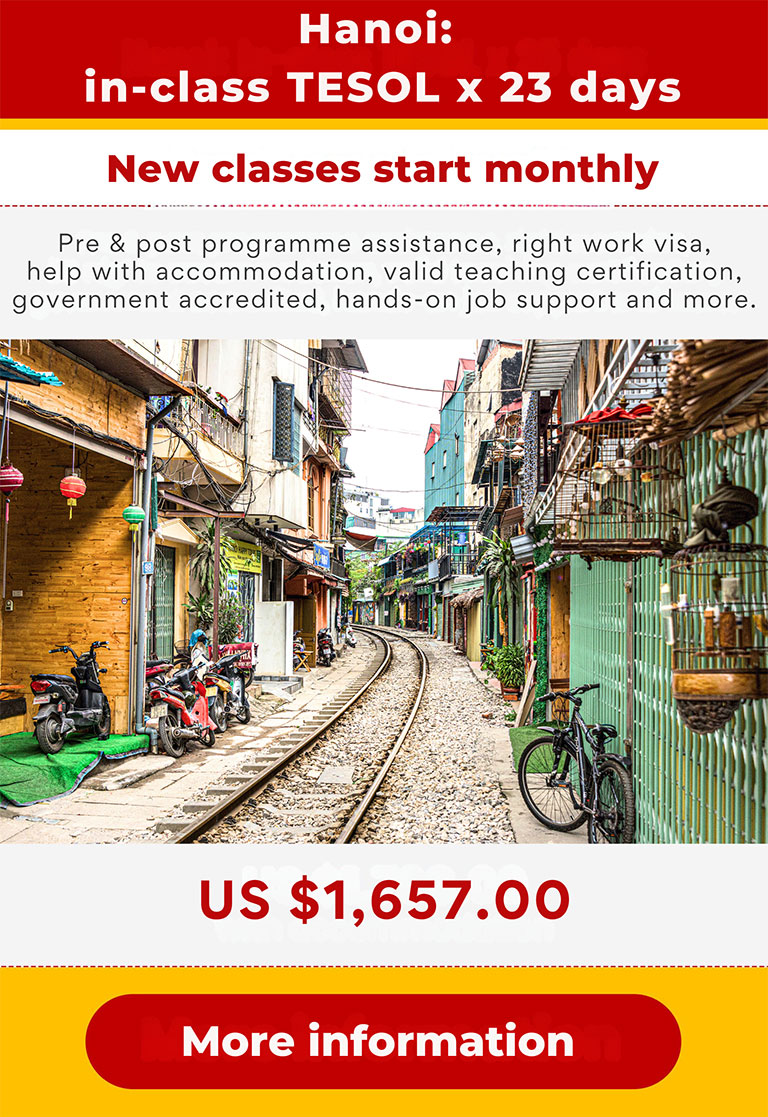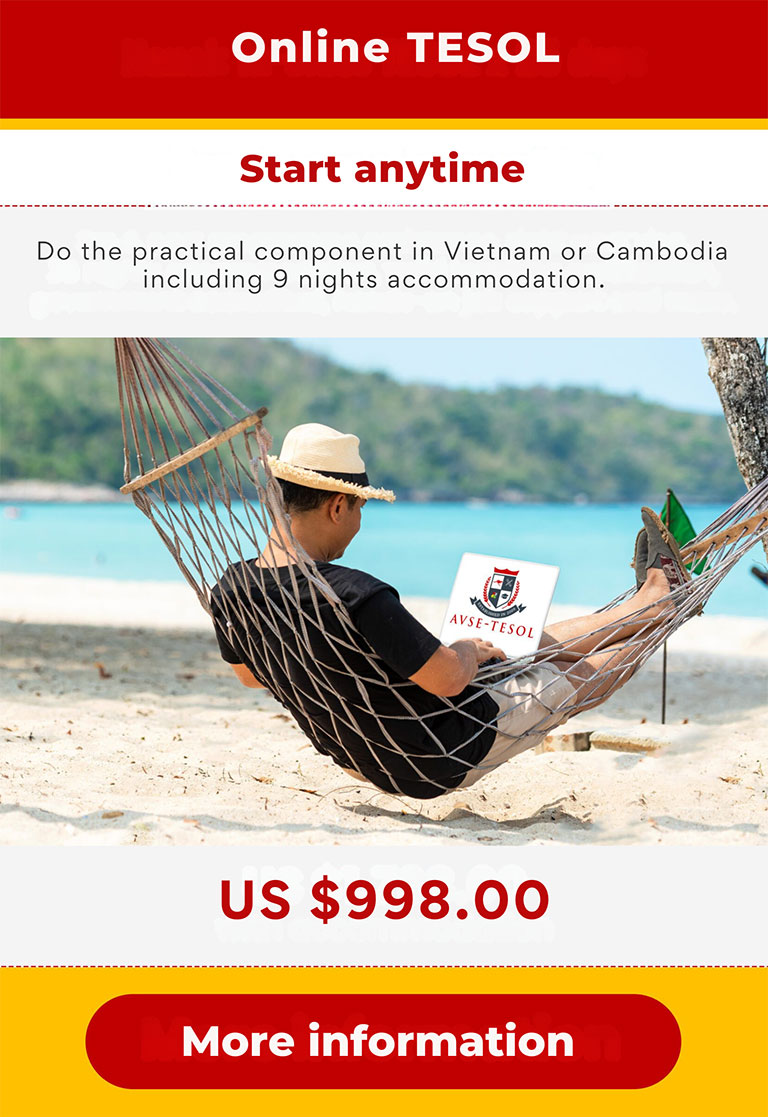We help people start a well-paid job teaching English in Vietnam or Cambodia in record time – with the right work visa, accommodation, valid teaching certification – and zero headaches.
Step one: grab the freebie below, then choose a red button.
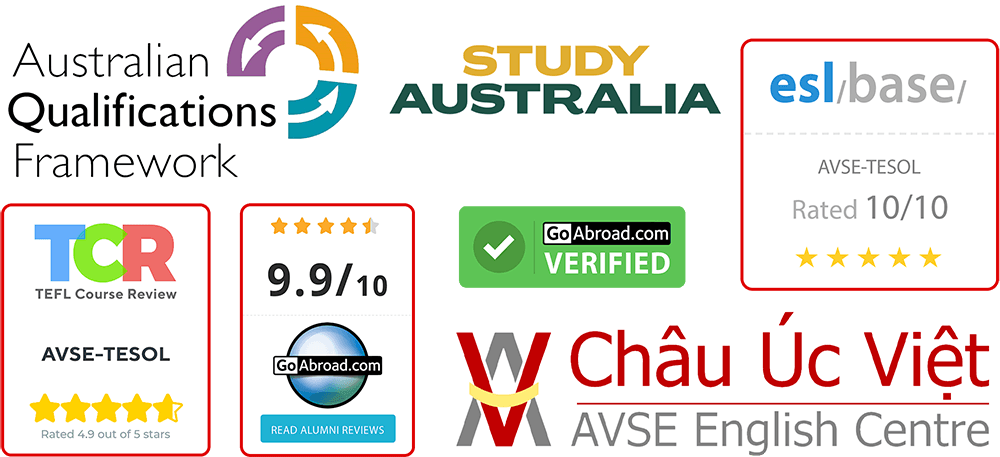
Game changer! Our ‘9 Point Playbook’, provides a powerful visual of how you’ll be teaching English in Vietnam or Cambodia in record time – without any worries.
Complete the form below – and click send. You’ll receive a free copy of our ‘9 Point Playbook’ by email.
Well-paid jobs at top schools:
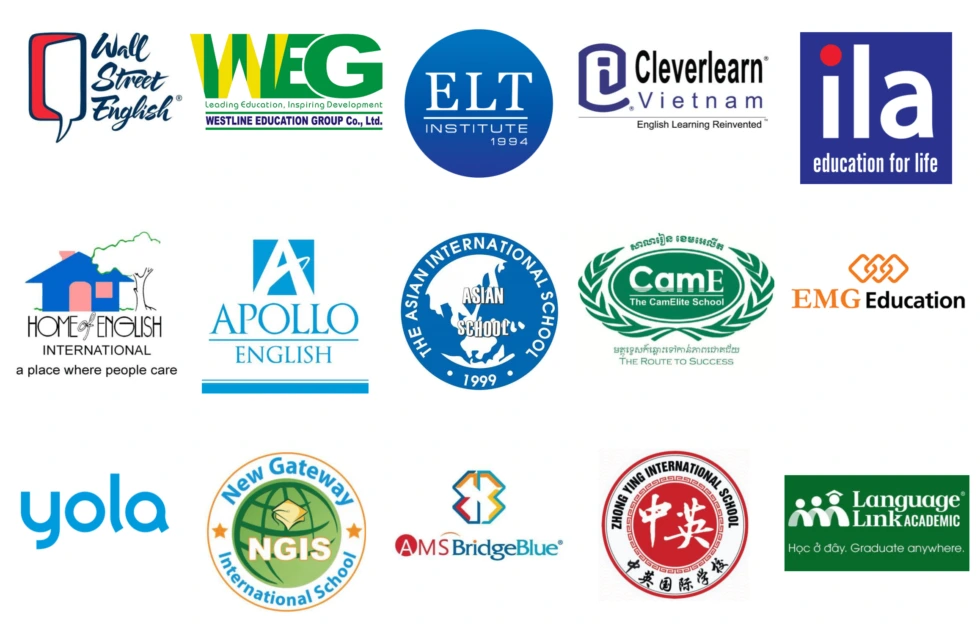
Video testimonials:
Select your destination:
Written testimonials:
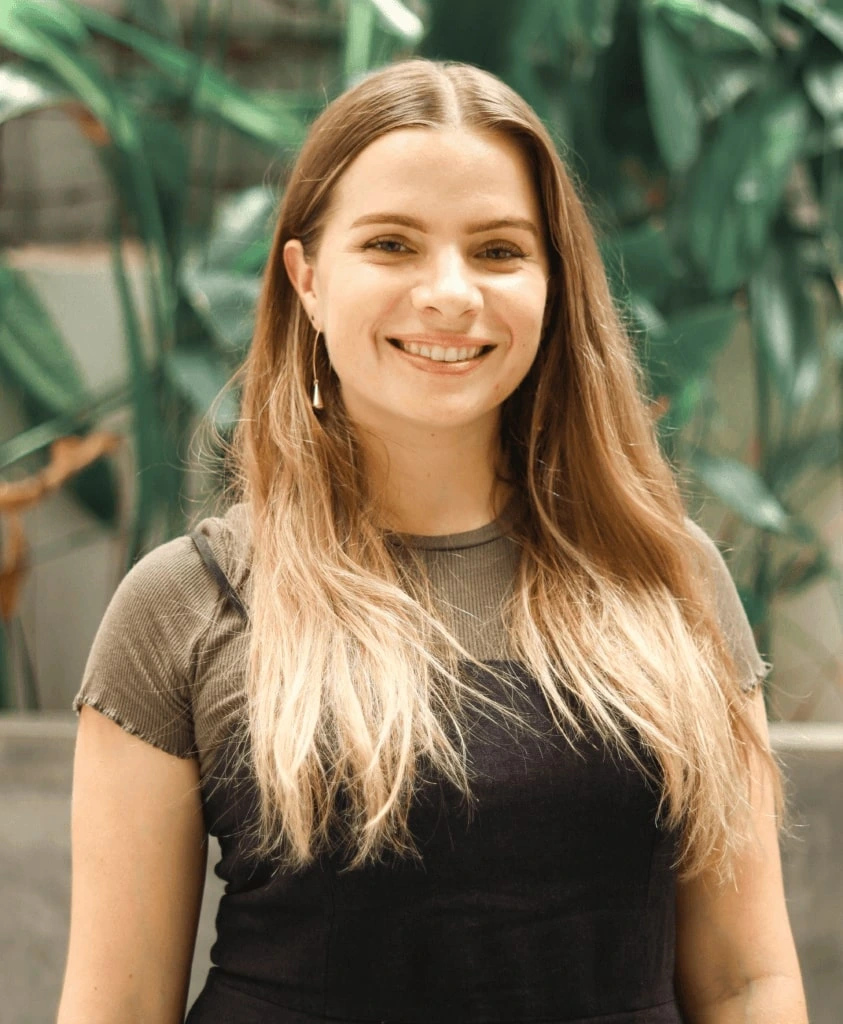
Name: Kelly – From: Gold Coast, Australia
…”It’s the practical nature of the TESOL course at AVSE that gave me confidence to begin teaching English in Cambodia. In addition, it’s impossible to overstate the importance of valid TESOL certification in an environment where fee-paying customers expect that their teacher holds the right qualifications to do the job. Would I recommended the Australian Government accredited TESOL programme at AVSE? Absolutely”!

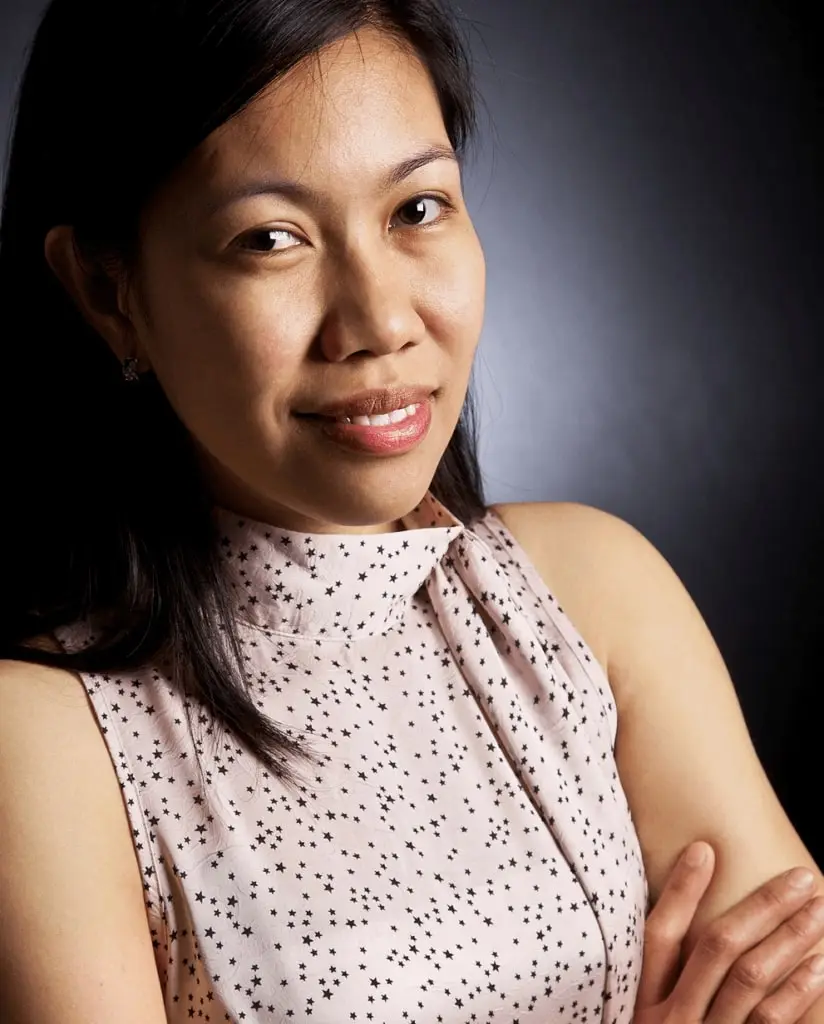
Name: Reyna – From: Makati, Philippines
“The great Terry Smith from the United Kingdom was my trainer at AVSE TESOL in Hanoi. He ably supported by Ms Evie. Both Terry and Evie were knowledgeable, supportive and engaging… I started teaching English in Hanoi immediately after my TESOL course finished…
…What AVSE TESOL offers in Hanoi isn’t cheap, but it is immersive and worth every peso. By the end of the course, I felt fully prepared for teaching English in Vietnam.”

Name: Joel – From: Pretoria, South Africa
I love AVSE TESOL and the people who work there. Seriously, they’re like family. From the Director of the school, Peter Goudge, through to Mr Wally, the Vietnamese guy who keeps on eye on the motorbikes out the front, they’re all committed to exceeding expectations…
…What I’ve achieved teaching English in Vietnam over the past 14 months wouldn’t have been possible without support from AVSE TESOL and the quality teacher training that I received.
Vietnam: Country Profile…
Teaching English in Vietnam is something that you’ve always wanted to do and now the time has arrived where you can live that long-held dream. How lucky are you? Very lucky indeed! Here’s some background information that might be handy to know before you set foot on Vietnamese soil for the first time.
History
Tip: If history is a passion, there’s a good chance you’ll be impressed with the War Remnants (Vietnam War) Museum in Ho Chi Minh City. It’s best to check the hours that it’s open on the day you intend to visit, rather than just turning up.
Archaeological artifacts indicate that humans were living in northern Vietnam 500,000 years ago, but primitive agriculture didn’t arrive until around 7,000 BC (+/-). It took a further 6,600 years (+/-) for the sophisticated Bronze Age ‘Dong Son’ culture, famed for its drums, to make an appearance.
The Chinese played a huge role in early Vietnamese history and it could be argued that not much has changed with the passing of time.
History books tell us that Vietnam has had more than its fair share of uprisings, rebellion, and occupation. From 1861 through to 1957 (apart from a relatively short period of Japanese occupation), Vietnam as we know it today was occupied by the French. Walk down any street in Hanoi, Ho Chi Minh City and other cities in Vietnam and you’ll see buildings from the French era.

Shortly after the French decided that they’d had enough, Vietnam was split into two separate countries, North Vietnam and South Vietnam. War erupted between the north and the south and millions of people died, including many civilians. The war in Vietnam came to an end on 30 April 1975 when the North Vietnamese Army overwhelmed the South with a massive offensive. Peace was achieved and the country started on the path to reunification.
The war years were followed by 11 plus years of economic and political isolation from the outside world, other than a few like-minded communist states. Food shortages were commonplace. Medical equipment was scarce. Medical treatment was primitive. Tragically, people died in high numbers. How many? Nobody knows.
What we see in Ho Chi Minh City, Hanoi and elsewhere in this wonderful country today, is a stark contrast to the reality of life in Vietnam 30 or so years ago. The transformation from a ‘lost cause’ to an economic powerhouse within three decades is miraculous. I’d like to think that those of us who chose to embark on a career teaching English in Vietnam during this period, played a part, no matter how small, in the transformation that has occurred.
Geography
Tip: You’d be well-advised to take plenty of insect repellant on a trip to the Mekong Delta. Without doubt, the nastiest mosquitos in the whole world live down that way.
Vietnam’s total land area is 331,211 square kilometres. The country has land borders with Cambodia, Laos and China.
Crudely, Vietnam can be divided into three segments: 1. the highlands and Red River Delta in the north; 2. the central mountains and costal lowlands in the middle; and 3. the Mekong Delta in the south. Interestingly, more than 10,000 square kilometres of the Mekong Delta is dedicated to rice farming, making the area one of the top rice-growing regions in the world.

The coastline of Vietnam with its stunning beaches is surely one of the country’s best kept secrets. Development has taken hold in coastal cities such as Nha Trang, Danang and Vung Tau, but there are still plenty of small fishing towns and hamlets on the coast that provide insight to the ‘real’ Vietnam. Certainly, Danang and Nha Trang are popular work and tourism destinations for folks teaching English in Vietnam. There are teaching jobs available on the coast, but competition is intense because of the lifestyle afforded by beachside living, especially in a country with a tropical climate. If beaches are your thing, don’t let my ‘competition’ comment deter you. Who knows? You might be in the right place at the right time.
Population
Tip: With 97 plus million people living on a relatively small tract of land, in a developing country, it’s no surprise that traffic congestion is a huge problem in cities and towns across Vietnam. When you need to be somewhere at a specified time, a teaching practice class for example, make sure you allow time for traffic-related delays.
The population of Vietnam is expected to reach 99 million people in 2023 – the fifteenth most populous country in the world. ‘Kinh’ is the largest ethnic group (85% plus of the total population) with the remaining 15% consisting of people from 53 distinct communities.
With every year that goes by we are seeing more Vietnamese migrate from rural areas to larger cities, especially to Ho Chi Minh City and Hanoi. Anecdotally, the lack of employment opportunities for local people and access to services such as medical care and education (government schools and tertiary education institutions) are key push factors. Presently, around 40% of Vietnamese people live in urban areas, more than 9% in Ho Chi Minh City alone. While statistics show us that local people are gravitating to the cities, if it happens that you prefer a slower pace of life, you’ll be pleased to know that there are still plenty of teaching jobs in regional and rural areas across Vietnam.
Interestingly, over the past 20 years the gap between the number of Vietnamese people who choose to move abroad, year-on-year, compared to the number of foreigners who take up residence, has narrowed considerably to the extent that it’s negligible. While opportunities to pursue a career path teaching English in Vietnam is a pull factor for many foreigners, history tells us that when a booming economy is coupled with a ‘Welcome Mat’, people respond. I’m a prime example.
Religion
Tip: Vietnam is a hardline Communist State and officially atheist. For those reasons and others, folks who are teaching English in Vietnam and other visitors would be well-advised to avoid any discussion about religion.
While Vietnam is officially atheist, the reality is that religion plays a part in the lives of many Vietnamese people. Buddhism, Taoism and Confucianism are the three most prominent religions in Vietnam. It’s not uncommon for those three religions to be grouped together as one religion named ‘Tam giao’ (in Vietnamese) or ‘the three teachings’.

Here’s a question for you. What percentage of the Vietnamese population is Catholic? Have a guess if you’re not sure and I’ll provide an answer further on.
In the meantime, you might be surprised to learn, as I was, that:
– there are more than 2,200 Catholic parishes the length and breadth of Vietnam – collectively serviced by 2,600+ ordained priests
– it took the French colonists 17 years (1863 to 1880) to build the Notre Dame Cathedral in the downtown area of Saigon (now Ho Chi Minh City). It remains a popular tourist destination to this day.
So, getting back to my question, ‘what percentage of the Vietnamese population is Catholic’? The answer is 7%. Did you know the answer? If not, was your guess close to the mark?
Climate
Tip: If possible, try and structure your routine so that you’re under an air conditioner or a fan during the hottest part of the day as distinct from being out and about. Heat related illness including dehydration in Vietnam is commonplace.
Vietnam’s climate varies from north to south, with the north having the conventional four seasons and the south having only two seasons, wet and dry.
It is hot and wet in the northern part of the country including Hanoi during the summer months and cold and dry in the winter months. High humidity and sunlight are weather characteristics in the north of Vietnam regardless of the time of year. Although the north of the country is either very wet or very dry, the transition months provide for the conventional four seasons.
The weather in the south of Vietnam including Ho Chi Minh City is oppressively hot and humid 12 months of the year. During the wet season you can almost set your clock by the daily downpour of rain. The rain typically lasts for only an hour or so, but long enough to cause local flooding. Usually, the flood water disappears within 30 minutes or so after the rain stops. During the dry season, as the term suggests, it’s highly likely you won’t see a drop of rain in the south of Vietnam. No rain means lots of dust and poor air quality so it’s a good idea to have a supply of surgical masks in your kit bag.

Regardless of whether you settle on teaching English in Vietnam up north or down south, I’d encourage you not to wear your work shoes to and from school during the wet season. Wear sandals or similar and carry your work shoes in a bag. Why? There’s a high chance you’ll have to wade through water to get from point A to point B at one time or another. Doing a teaching shift in saturated socks and shoes from trudging through ‘pooey’ water will be unpleasant for you – and your students.
Cuisine
Tip: Occupiers rarely add value to a country, but give credit where it’s due. The French baguettes that are found the length and breadth of Vietnam are simply divine. Throw in a bit of salad, meat of some sort and a drop of soya sauce and you’ve got a perfect Banh Mi for breakfast or lunch.
Putting aside the more exotic ‘food items’ that a lot of Vietnamese people swear by, you’d have to say that the local cuisine is right up there with the healthiest on offer anywhere in the world. Pretty much every meal contains ‘farm-fresh’ ingredients including lean meat, vegetables, herbs and spices. Most Vietnamese dishes are a testament that ‘cheap’ can also taste good. You’ll have ample opportunity while teaching English in Vietnam to make up your own mind. Here’s a random selection of traditional food choices in Vietnam that you should try at least once:
Pho: a soup-like dish with rice-noodles, meat of one kind or another, bean sprouts, a sprinkling of various herbs and spices and a splash of lemon. Most Vietnamese will add soya sauce and chilli to a bowl of Pho in quantities that would leave the average westerner aghast.
Bo Kho: a braised beef and vegetable stew with lemongrass and other spices. The stew is typically left to simmer for at least a couple of hours. Make sure you’ve got a French baguette to scrape the bowl clean.
Bun Cha: is a pork-meatball (looks like a rissole) dish that’s typically eaten with salad and bread. It’s a popular ‘street food’, especially with young children in Hanoi and elsewhere in the north of Vietnam.
Banh Mi: is basically a French baguette that’s stuffed with meat, salad and vegetables of your choosing. How quirky is this? The iconic Travel Book, Rough Guides, has ranked Banh Mi right up there with the World’s best street foods. Banh Mi is certainly a staple food of many foreigners who are teaching English in Vietnam.

Visa
Tip: If you go with the ‘Visa on Arrival’ option, make sure you’ve got the Approval Letter with you at your port of entry.
To enter Vietnam, you will need a passport that has at least 6 months remaining and a valid visa. These days most people who travel to Vietnam opt for a Tourist Visa on arrival, which can be finalised online from the comfort of your own living room in less than 10 minutes. You will find information about the Tourist Visa on arrival option here.
Assuming you plan to complete the Australian Government accredited TESOL course at AVSE-TESOL in Hanoi or Ho Chi Minh City with the idea of teaching in Vietnam after your training finishes, you’d be well-advised to opt for a 3-month Tourist Visa on arrival. Why? It will cover you for the period of the TESOL course, your initial employment and the transition to an employer sponsored visa. Keep in mind that Vietnam is one of those countries where the visa that’s available to be purchased today, may not be available tomorrow. The same principle applies to eligibility requirements. Visas are a moving feast in Vietnam.
Currency
Tip: If you plan on teaching in Vietnam after your TESOL course at AVSE-TESOL, your employer (a school) will almost certainly pay you once a month with a wad of Vietnam Dong notes. It’s best to open a bank account at the earliest opportunity and deposit spare funds. Don’t stash money in your room – almost certainly it will ‘walk out the door’. Speak with the friendly folks at AVSE-TESOL in Hanoi or Ho Chi Minh City if you need a helping-hand with opening a local bank account.
Vietnam’s official currency is the Vietnam Dong (vnd). Yes, I agree, it’s a funny name for a currency! Prices are typically quoted and advertised in Vietnam Dong. ATM machines only dispense Vietnam Dong.
Sending money out of Vietnam is complicated and the rules change without notice. If you have bills to pay in your home-country, you may wish to seek advice from other expats on how to send money abroad. In stark contrast, sending money to Vietnam is a breeze with the assistance of entities like Wise, Western Union and MoneyGram.
Summary
In this ‘Country Profile’ post I’ve provided a snapshot of Vietnam based on my own experience. I have touched on matters pertaining to history, population, cuisine and other areas that I thought would be useful for a ‘rookie’ to at least reflect upon in a quiet moment. If you take nothing else from this blog post, be careful with those nasty mosquitos in the Mekong Delta (Geography) and please, please, please do not store your hard-earned money from teaching English in Vietnam under your bed or a similar ‘hidey spot’ (Currency).
About the writer: Peter Goudge has been teaching English in Vietnam since 2006. Originally from Australia, Peter now calls Ho Chi Minh City home. Peter is the owner of AVSE-TESOL in Ho Chi Minh City, Hanoi, Phnom Penh and Online. AVSE’s core business is delivering an Australian Government accredited TESOL programme for prospective ESL teachers. Check out the AVSE website: www.avse.edu.vn
Cambodia: Country Profile…
What terrific news! After working double shifts for the past 6-months to save money, you’re about to head-off and pursue that long-held goal of teaching English in Cambodia. Your interest in Cambodia was sparked by email and Zoom communication with the good people at AVSE-TESOL in Phnom Penh. Personally, I think you’ve made a great choice. Cambodia is the ‘last frontier’ for English as a Second Language (ESL) teaching.
In this post I’ll highlight key information about Cambodia that will help with making the transition to ‘living like a local’ a bit quicker than it might otherwise be.

History
Tip: They say we should be mindful of bad things that have occurred in history, so it’s less likely they’ll be repeated. With this idea in mind, no stint teaching in Cambodia would be complete without visiting the ‘Killing’ Fields‘ and the Genocide Museum in Phnom Penh, illustrating the Khmer Rouge years.
The Kingdom of Cambodia has a checkered history, not just over the past four or five decades, but for time immemorial. What we know as Cambodia today was part of at least two ancient realms before declaring independence for the first time in the year 802. At its peak in the 12th century, the Khmer Empire was the largest nation in Southeast Asia (as we know it today). The Angkor Wat religious temple, modern day Cambodia’s premier tourist attraction, dates from this period. Skipping forward six centuries, Cambodia became a French protectorate in 1867. Other than a period of Japanese occupation (1941 to 1945), the French ruled Cambodia until 1953.
Between 1975 and 1979, the Khmer Rouge controlled Cambodia under the leadership of the infamous Pol Pot. It’s estimated that the Khmer Rouge were responsible for the deaths of more than two million Cambodians, a quarter of the population at that time. In addition to massacre on an industrial scale, the Khmer Rouge destroyed much of Cambodia’s historic architecture and sites that carried religious importance. What wasn’t destroyed by those who ruled Cambodia during this period, was left in ruins by years of war and neglect. In the space of a couple of decades, Cambodia went from being a place that Kings, Queens, Presidents, Prime Ministers and Dictators went out of their way to visit, to a place of unimaginable suffering. It wasn’t until the early 1990s that Cambodia began to emerge from the darkness of war and famine. The monarchy was restored in 1993 and today Cambodia operates a ‘multiparty’ ‘democracy’ with a King as the head of State.
While Cambodia’s reintegration to the world community is one of the success stories of the late 20th century, there’s a lot of ‘nation-building’ work that still needs to be done. Cambodians see a direct connection between English language skills and the development of their country. This directly translates into decent jobs teaching in Cambodia for people like you – folks with the skills, knowledge, qualifications and willingness to step outside their comfort zone.
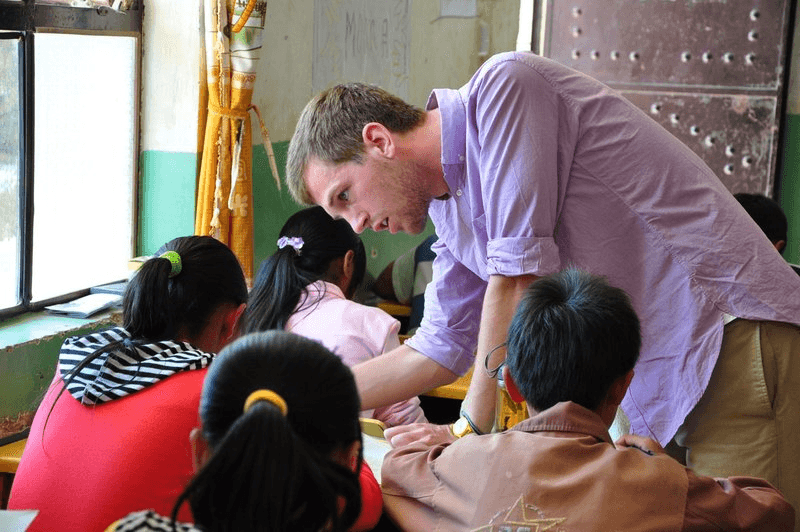
Geography
Tip: Don’t swim or wade in a river or stream in Cambodia. It might look inviting, but there’s a high chance of something lurking in the water that will make you very ill.
The total land area of Cambodia is 181,035 square kilometres. Cambodia shares land borders with Thailand, Laos and Vietnam. River systems, especially the Tonle Sap and the Mekong, flat farming land and mountain ranges are Cambodia’s most prominent geographical features. Rivers that flow through the country are essentially the lifeblood of Cambodian society. Among other things, Cambodia’s rivers provide an important food source, transportation and water for agriculture, the country’s main industry.
While Sihanoukville in the south of Cambodia is best known as holiday destination for beachgoers and folks who like casinos, it is the country’s only deep-water, maritime port. Sihanoukville has undergone massive transformation over the past decade on the back of casino-related development, funded almost exclusively by Chinese companies.
From a geographical perspective, most of the English teaching jobs in Cambodia are in Phnom Penh, Siem Reap and Sihanoukville. Finding a teaching job in a rural area in Cambodia is possible, but it requires patience and lots of networking because they’re relatively few in number.
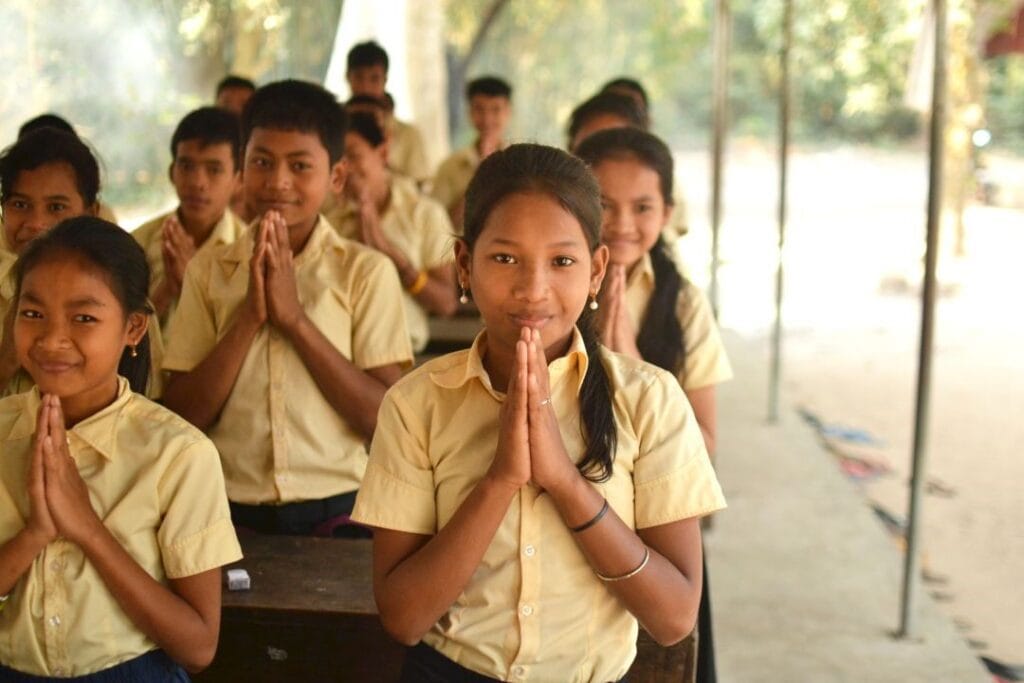
People
Tip: If you’re invited to eat with a Khmer family at their house, make sure you remove your shoes and hat before going inside. Also, a small gift, perhaps fruit or flowers, will be well-received.
Cambodia’s population is estimated to be 16.6 million people. Khmer is the largest ethnic group in Cambodia – 90%+ of the total population. Other ethnic groups in Cambodia with sizable numbers include Khmer Muslims, Vietnamese, Chinese and tribal groups such as the Pnong, Tampoun, Jarai and Kreung peoples. Over the past five years in particular, there has been a noticeable increase in the number of foreigners from Europe, North America and Australia who are living in Cambodia. Anecdotally, the key ‘pull’ factors include the low cost of living, the relative ease to open a business and an expat lifestyle that’s afforded by teaching opportunities and other lines of work where English language skills are vital.
I’ve had the good fortune to spend years travelling around the world. I have lived and worked in 8 different countries. I can put my hand on my heart and say without a shadow of doubt that Khmer people are right up there with the best of the best. Abject poverty prevails in Cambodia, but your average Khmer person will literally give you the shirt off his (or her) back. You’ll be invited in for meals, even though it’s not uncommon for a family to forgo a meal because they don’t have any money. There is every reason for Khmer people to be hostile towards foreigners given the pillaging that has occurred throughout history, but they’re not hostile at all. They’re a forgiving lot.
Religion
Tip: Monks are revered in Cambodia. It’s important to always show respect to monks. Make sure you are dressed conservatively (fully covered) before entering a temple. Under no circumstances should you touch a monk.
Official statistics on religious affiliation in Cambodia don’t exist, but observers estimate that around 97% of the population is Theravada Buddhist, with the remaining 10% consisting of Christians, Muslims and other denominations.
During your time teaching in Cambodia, you’ll no doubt have the opportunity to visit any number of pagodas and other places of religious significance. It’s wise to do a bit of research beforehand on the places you plan to visit. Apart from providing information that will make your visit more meaningful, you’ll be informed about behaviour, dress code and suchlike, that’s considered appropriate at that location.
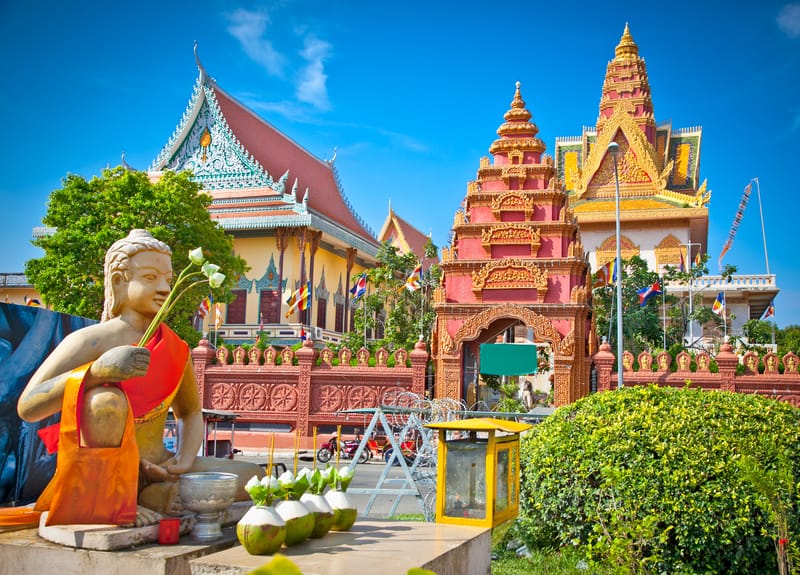
Climate
Tip: If you’re teaching in Cambodia in the wet season, make sure you carry your work shoes in your bag and wear sandals to and from school. Why? There’s a good chance you’ll have to wade through knee-deep water every now and again.
Cambodia has a tropical climate with warm to hot weather 12 months of the year. There are two distinct seasons in Cambodia, the dry season and the wet season.
The dry season typically starts in November and goes to the following April. The weather in Cambodia during this period is characterised by zero (or next to zero) rain. With temperatures reaching upwards of 38 degrees Celsius, April and May are the hottest months in Cambodia, with clear blue skies being the norm.
From late May through to October, heavy rain and high humidity dominate the weather pattern in Cambodia. Like that famous song for young children, ‘when it rains, it pours’, probably like nothing you have witnessed before. As quickly as it rains in Cambodia during the wet season, the rain stops and life resumes from where it left off. It’s a sight to behold.
Language
Tip: If taking formal Khmer language lessons while you’re busy teaching in Cambodia doesn’t appeal to you, learning how to count in the local language in your own time would be a wise move. You will find it handy when buying things.
With 90% of the population being ‘ethnic Khmer’, it’s no surprise that Cambodia’s official language is ‘Khmer’. Interestingly, it hasn’t always been this way. During the colonial period, French was the official local language.
Nowadays, street signs and the like in Cambodia are usually in Khmer and English. Postage stamps and currency include snippets of English. With a high number of Vietnamese, Chinese and Laotian people living and working in Cambodia, there’s a good chance you will come across folks speaking a language that is less familiar, as you go about your everyday business.

Economy
Tip: Doing business at any level in Cambodia can be frustrating due to the bureaucratic processes and language barriers. Put ‘one foot in front of the other’ and nearly always you’ll achieve the desired outcome.
Ostensibly the economy in Cambodia is based on the free market system, but government intervention is commonplace. Cambodia has recorded economic growth over the past decade that most western countries can only dream about, largely on the back of substantial foreign investment. Most economic activity in Cambodia is agricultural in nature. Key products include rice (a staple food across the region), rubber, cassava and pepper. Cambodia also has a thriving export market for teak, mahogany, precious gems, textiles and footwear.
Vocational Education and Training, including English language studies, is a relatively new industry in Cambodia. Like other segments of the Cambodian economy, it’s experiencing exponential growth and job opportunities for foreign teachers and trainers outstrip the number of suitably qualified people many times over. This is good news for people who are up for the challenge of teaching English in Cambodia – or some other discipline.
Visa
Tip: Make sure you have a pen of your own that works when you arrive at your port of entry for Cambodia.
You will need a valid passport with a minimum of six months remaining and a valid visa to enter Cambodia. You will also need a lot of patience when you arrive at your port of entry. Entering Cambodia can be really quick or really slow, there doesn’t seem to be a middle ground.
If your plans include completing the TESOL programme at AVSE-TESOL in Phnom Penh and then travelling outside of Cambodia after the course finishes, a conventional Tourist Visa (coverage for 30 days) may well be sufficient. You can purchase a Cambodian Tourist Visa online or you can buy one at your point of entry. The price is US $30.00. Note, your payment needs to be accompanied by two passport size photos.
Conversely, if your plans include completing the TESOL programme at AVSE-TESOL in Phnom Penh and then teaching English in Cambodia immediately after, you’d be well-advised to opt for the one-month Ordinary Visa (E class) on arrival. Why? It can be extended indefinitely without having to leave the country on what is commonly called a ‘border (visa) run’. The Ordinary Visa (E class) costs US $35.00. Again, you will need two passport size photos to keep the visa people happy.
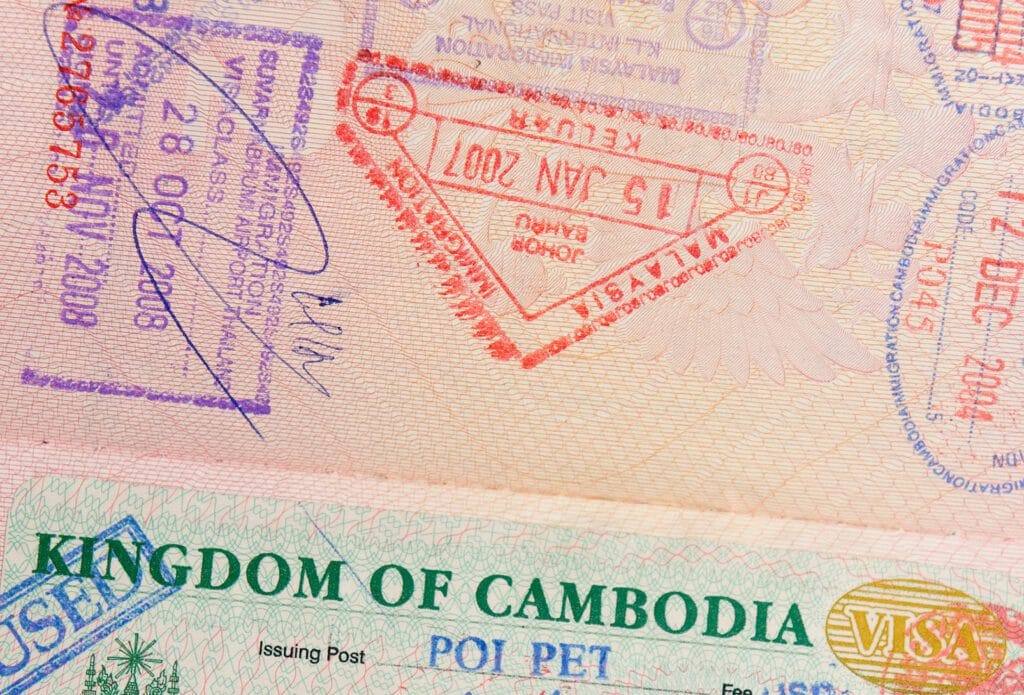
Currency
Tip: Cambodians really dislike bank notes that are old, dirty or torn, even if it‘s only a nick. ‘Tainted’ bank notes are often given in change when a person buys something as a way of passing the ‘headache’ onto someone else. Carefully check your change for bank notes that are problematic.
Cambodia’s official currency is the ‘Riel’, but local people prefer to conduct transactions in US dollars. Prices are typically quoted and advertised in US dollars. ATM machines all over Cambodia dispense US dollars. Almost certainly your monthly salary from teaching English in Cambodia will be paid in US dollars.
It’s fair to say that Cambodia is one of those places in the world where there’s a need to be extra vigilant with money and items of value. Such is life in a country where abject poverty prevails. Among other things, being extra vigilant includes carrying your wallet in a front pocket, not storing all your money in one place, only carrying the money that you need at a given time, not counting your money in the street and being super careful when you use an ATM. Here’s a challenge for you. Put your ‘thinking cap’ on and come up with another five ‘being vigilant with money’ strategies.
Conclusion
I have touched on several key issues in this post, history, people and religion to name only three, with the intent of sparking interest and offering a helping-hand with your transition to everyday life in Cambodia. You’ll encounter plenty of frustrations in Cambodia, but they’re just part of the journey. Almost certainly when you look back on your time teaching in Cambodia, it will be the people you met, locals and other expats, that will first come to mind. You’re very lucky! Grab the opportunity with both hands.
About the writer: Peter Goudge is the Managing Director (and owner) of Australian Vocational Skills and Education (AVSE-TESOL) in Hanoi, Ho Chi Minh City, Phnom Penh and Online. TESOL certification through Peter’s company, AVSE-TESOL, is all about providing aspiring ESL educators with the skills, knowledge and quality certification they need for jobs teaching in Cambodia, Vietnam and elsewhere. Here is a link to the AVSE-website: www.avse.edu.vn
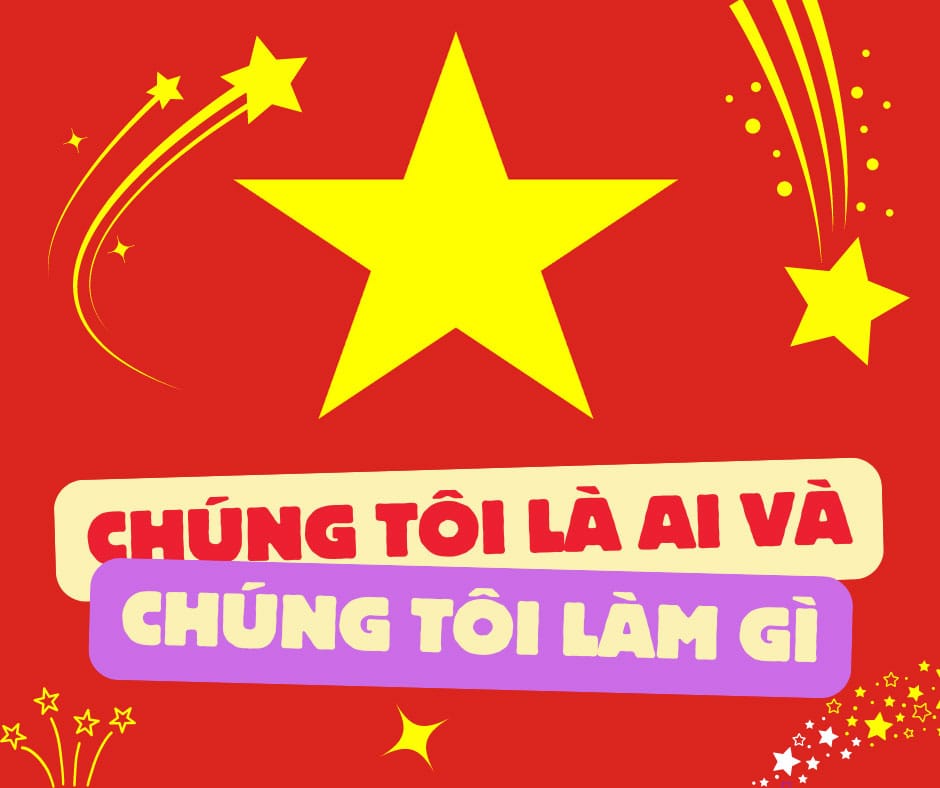
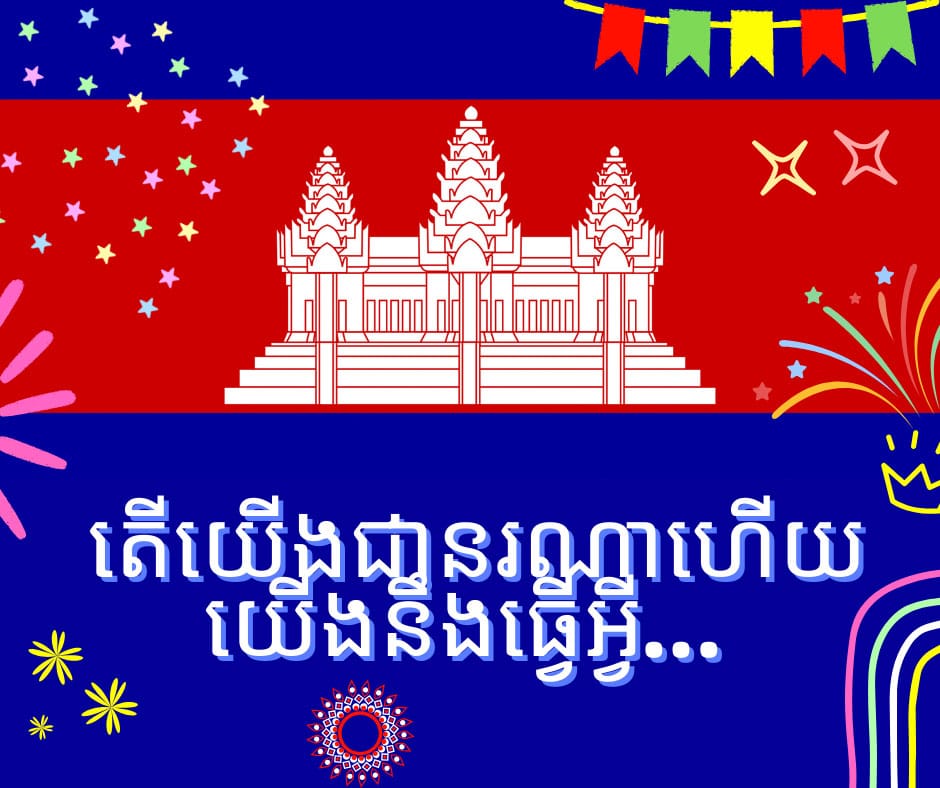
KHÓA HỌC TESOL CHO NGƯỜI VIỆT NAM | ĐƯỢC CHÍNH PHỦ ÚC CÔNG NHẬN
Đầu tiên và quan trọng nhất, AVSE-TESOL (Úc) là một tổ chức giáo dục và đào tạo nghề do gia đình sở hữu và quản lý. Hoạt động kinh doanh cốt lõi của chúng tôi là cung cấp các chương trình chứng nhận TESOL được Chính phủ Úc công nhận. Chúng tôi là một Tổ chức Đào tạo đã Đăng ký (RTO) tại Úc. Số RTO của chúng tôi là: 45373.
Cơ quan Chất lượng Kỹ năng Úc (ASQA) là cơ quan quản lý giáo dục và đào tạo nghề tại Úc. Sau một quá trình ứng dụng và kiểm tra toàn diện, ASQA đã ủy quyền cho AVSE-TESOL cung cấp Chứng chỉ IV trong chương trình đào tạo TESOL (Dạy tiếng Anh cho những Người Nói Ngôn ngữ Khác không phải tiếng Anh) tại lớp (Mã khóa học: 11245NAT) ở nước ngoài, cụ thể là tại Thành phố Hồ Chí Minh. AVSE-TESOL cũng cung cấp cùng một Chứng chỉ IV trong TESOL thông qua hình thức học trực tuyến, có thể hoàn thành chứng chỉ này một cách thoải mái tại ngôi nhà riêng của bạn. Thông tin về chương trình chứng nhận TESOL trực tuyến được chính phủ công nhận của AVSE có thể được tìm thấy tại đây.
Trên trang này, chúng tôi sẽ tập trung vào khóa học TESOL tại lớp.
Khóa học TESOL tại lớp tại AVSE ở Thành phố Hồ Chí Minh yêu cầu cam kết thời gian ước tính là 150 giờ trong 3,5 tuần bao gồm ít nhất 12 giờ kinh nghiệm giảng dạy thực tế với các học viên tiếng Anh ‘thực sự’ tham gia các lớp ESL đang diễn ra. Học viên TESOL có thể lựa chọn hoàn thành các bài tập đánh giá trong vòng 6 tháng nếu họ không có ý định bắt đầu làm giáo viên tiếng Anh trong ngắn hạn hoặc trung hạn. Chương trình chứng nhận TESOL được công nhận tại AVSE phù hợp với những người chuyên nghiệp ở mọi lứa tuổi và nền tảng quan tâm đến việc giảng dạy tại Việt Nam hoặc các quốc gia khác. Nó cũng phù hợp với những người muốn dạy tiếng Anh trực tuyến.
Chương trình tại lớp của chúng tôi ở Thành phố Hồ Chí Minh là chương trình học thuật và nội dung tương đương với chứng chỉ CELTA hoặc Trinity trong TESOL. Khóa học có hai mục tiêu chính: 1. chứng nhận giáo viên tiềm năng cho một sự nghiệp bổ ích như một nhà giáo ESL; và 2. cung cấp cho cả giáo viên có kinh nghiệm và tiềm năng kiến thức lý thuyết, kỹ năng và kinh nghiệm giảng dạy thực tế.
Các học viên hoàn thành chương trình chứng nhận TESOL được Chính phủ Úc công nhận tại AVSE-TESOL:
- Được trang bị đầy đủ để cung cấp các trải nghiệm học tập tương tác, thú vị cho học viên ở mọi lứa tuổi và trình độ kỹ năng;
- Thành thạo trong việc quản lý một lớp học;
- Thông thạo các nguyên tắc sử dụng và phân tích ngôn ngữ;
- Có kiến thức về ‘lý thuyết giảng dạy’ và ứng dụng thực tế của nó; và
- Có kỹ năng xác định những khó khăn trong học tập và phát triển & thực hiện các kế hoạch hành động đáp ứng.
Khóa học TESOL tại AVSE-TESOL chắc chắn là một thử thách, nhưng nó cũng rất bổ ích. Có rất nhiều điều để học trong hơn ba tuần. Bạn sẽ được dạy các kỹ năng cho phép bạn ‘bắt đầu ngay’ như một giáo viên tiếng Anh. Chúng tôi sẽ đảm bảo bạn nhận được tất cả sự hỗ trợ cần thiết trong suốt khóa học để làm cho trải nghiệm của bạn trở nên phong phú và đáng nhớ.
Ngày đầu tiên của mỗi khóa học TESOL tại lớp ở Thành phố Hồ Chí Minh được dành để làm quen với khu vực xung quanh trung tâm đào tạo và giao lưu với những người mà bạn sẽ dành gần một tháng trong suốt khóa học. Buổi tối ngày đầu tiên có Tiệc Chào Mừng (miễn phí). Chương trình học – phần trọng tâm– bắt đầu vào ngày thứ hai.
Số lượng học viên tối đa mà AVSE-TESOL có thể chấp nhận cho chương trình chứng nhận TESOL được công nhận tại Thành phố Hồ Chí Minh là 16. Các lớp học thường đủ chỗ trong một hoặc hai tháng trước ngày khai giảng dự kiến, vì vậy tốt nhất là nên đăng ký sớm.
Các học viên TESOL đến AVSE-TESOL từ khắp Việt Nam và nước ngoài. Khoảng 50% học viên TESOL của chúng tôi có tiếng Anh là ngôn ngữ thứ hai (hoặc thứ ba). Trong thập kỷ qua, học viên TESOL trẻ tuổi nhất tại AVSE là 17 tuổi (người Việt Nam) và học viên lớn tuổi nhất là 78 tuổi (người Mỹ). Thông thường, các lớp TESOL tại mỗi AVSE có sự phân chia đồng đều giữa nam và nữ.
Phần lý thuyết của chương trình chứng nhận TESOL được công nhận của chúng tôi chủ yếu diễn ra trong các tuần 1, 2 & 3, từ thứ Hai đến thứ Sáu từ 8.30 sáng đến 3.00 chiều (+/-). Phần thực hành (quan sát và thực hành giảng dạy – tối thiểu 14 giờ) được phân bổ đều trong suốt khóa học và bao gồm một số buổi tối và một phần của mỗi cuối tuần. Trong tuần cuối cùng của chương trình học, trọng tâm là hỗ trợ hoàn thành các bài tập đánh giá cần thiết và chuyển tiếp sang công việc có trả lương.
Nội dung khóa học bao gồm các phong cách học tập, cấu trúc bài học, lập kế hoạch bài học, giảng dạy ngôn ngữ, quản lý lớp học, trình bày tài liệu, các bài kiểm tra trong nước và quốc tế, phản hồi, học tập có sự hỗ trợ máy tính, xây dựng danh mục tài nguyên giảng dạy và học tập – và nhiều hơn nữa. Có sự kết hợp giữa các hình thức đánh giá, nhưng bạn sẽ vui mừng khi biết rằng không có kỳ thi cuối khoá. Nội dung và các bài tập đánh giá phù hợp với những gì bạn mong đợi từ một chương trình chứng nhận TESOL được chính phủ công nhận.
Nền tảng bài đánh giá của bạn sẽ là 12 giờ quan sát và thực hành giảng dạy (xem ở trên). Bạn có thể bắt đầu ngay từ ngày đầu tiên bằng cách quan sát các lớp ESL thực tế và ghi lại những suy nghĩ của mình khi bạn trong quá trình học. Vào cuối tuần thứ hai, chúng tôi sẽ hướng dẫn và hỗ trợ bạn khi bạn bắt đầu lập kế hoạch, giảng dạy và đánh giá 6 giờ các lớp tiếng Anh thực tế với các học viên địa phương thực sự.
AVSE-TESOL tuyển dụng các giảng viên đủ điều kiện làm việc theo các tiêu chuẩn tuân thủ nghiêm ngặt của Chính phủ Úc cho các chương trình đào tạo nghề. Những tiêu chuẩn này đảm bảo chất lượng và tính độc lập của quá trình đánh giá và sự sẵn sàng của bạn để dạy tiếng Anh như một ngôn ngữ thứ hai ngay sau khi bạn hoàn thành chương trình chứng nhận TESOL được công nhận.
Thú vị là, 34% số người tốt nghiệp khóa học TESOL tại AVSE ban đầu được giới thiệu bởi cựu học viên. Mặc dù số lượng giới thiệu từ các học viên cũ và sự tăng trưởng đáng kể qua các năm cho thấy AVSE đang đi đúng hướng, chúng tôi luôn nhận thức được mối liên hệ giữa cải tiến liên tục và thành công trong tương lai.
វគ្គសិក្សា TESOL សម្រាប់គ្រូបង្រៀនភាសាអង់គ្លេសនៅកម្ពុជា
ជាដំបូងយើងចង់បង្ហាញបងប្អូនឲ្យដឹងថា AVSE-TESOL (អូស្ត្រាលី) គឺជាស្ថាប័នអប់រំ និង បណ្តុះបណ្តាលវិជ្ជាជីវៈដែលគ្រប់គ្រងជាលក្ខណៈគ្រួសារ។ ស្នូលនៃអាជីវកម្មរបស់យើងគឺ ដើម្បីផ្តល់ជូននូវកម្មវិធីវិញ្ញាបនបត្រ TESOL ដែលទទួលស្គាល់ដោយរដ្ឋាភិបាលអូស្ត្រាលី។ យើងគឺជាអង្គការបណ្តុះបណ្តាលវិជ្ជាជីវៈដែលបានចុះបញ្ជី (RTO) នៅប្រទេសអូស្ត្រាលីដែលលេខ RTO របស់យើងគឺ៖ ៤៥៣៧៣។
អាជ្ញាធរជំនាញនៃប្រទេសអូស្ត្រាលី ហៅកាត់ថា (ASQA) គឺជាទីភ្នាក់ងារនិយតកម្មសម្រាប់ការអប់រំ និង បណ្តុះបណ្តាលវិជ្ជាជីវៈនៅប្រទេសអូស្រា្ដលី។ បន្ទាប់ពីដំណើរការកម្មវិធី និងការធ្វើសវនកម្មដ៏ហ្មត់ចត់ (ASQA) បានអនុញ្ញាតឱ្យ AVSE-TESOL ផ្តល់ជូននូវវិញ្ញាបនបត្រក្នុងថ្នាក់ IV នៅក្នុងកម្មវិធីបណ្ដុះបណ្ដាល TESOL(ការបង្រៀនភាសាអង់គ្លេសដល់អ្នកនិយាយភាសាដទៃ) (លេខកូដវគ្គសិក្សា: 11245NAT) នៅបរទេស ជាពិសេសនៅក្នុងរាជធានីភ្នំពេញ។ AVSE-TESOL ក៏ផ្តល់ជូននូវវិញ្ញាបនបត្រ IV ដូចគ្នានៅក្នុង TESOL តាមរយៈការសិក្សាតាមអ៊ីនធឺណិតដែលអនុញ្ញាតឱ្យអ្នកចូលរួមបញ្ចប់ការសិក្សារពីផ្ទះរបស់ពួកគេផ្ទាល់។ ព័ត៌មានអំពីកម្មវិធីវិញ្ញាបនបត្រ TESOL ដែលទទួលស្គាល់ដោយរដ្ឋាភិបាលតាមអ៊ីនធឺណិតរបស់ AVSE អាចរកបាននៅទីនេះ។
នៅលើទំព័រនេះ យើងនឹងផ្តោតទៅលើវគ្គសិក្សា TESOL នៅក្នុងថ្នាក់។
វគ្គសិក្សាក្នុងថ្នាក់ TESOL នៅ AVSE ក្នុងទីក្រុងភ្នំពេញទាមទារអោយយើងមានការប្តេជ្ញាចិត្តក្នុងការសិក្សាប្រហែល ១៥០ ម៉ោងក្នុងរយៈពេល ៣សប្តាហ៍កន្លះ រួមទាំងបទពិសោធន៍បង្រៀនជាក់ស្តែង យ៉ាងហោចណាស់ ១២ ម៉ោង (អប្បបរមា) ជាមួយសិស្សភាសាអង់គ្លេសពិតប្រាកដ ដែលកំពុងសិក្សានៅក្នុងថ្នាក់ ESL។ ម្យ៉ាងវិញទៀត សិស្ស TESOL ក៏មានជម្រើសក្នុងការចំណាយពេលរហូតដល់ ៦ ខែ ដើម្បីបំពេញកិច្ចការវាយតម្លៃ ក្នុងករណីដែលពួកគេមិនទាន់ចង់ចាប់ផ្តើមការងារជាគ្រូបង្រៀនភាសាអង់គ្លេសក្នុងរយៈពេលខ្លីឬមធ្យម។ កម្មវិធីវិញ្ញាបនបត្រ TESOL ដែលត្រូវបានទទួលស្គាល់ដោយ AVSE គឺសមរម្យសម្រាប់បុគ្គលគ្រប់វ័យ និងគ្រប់មជ្ឈដ្ឋានដែលមានគំនិតវិជ្ជាជីវៈ និងការចាប់អារម្មណ៍ក្នុងការធ្វើជាគ្រូបង្រៀនភាសាអង់គ្លេសនៅក្នុងប្រទេសកម្ពុជា ឬប្រទេសដទៃទៀត។ វាក៏ល្អសម្រាប់អ្នកដែលចាប់អារម្មណ៍ក្នុងការបង្រៀនភាសាអង់គ្លេសតាមអ៊ីនធឺណិតផងដែរ។
កម្មវិធីសិក្សាក្នុងថ្នាក់របស់យើងនៅទីក្រុងភ្នំពេញមានស្ថានភាពសិក្សា និងខ្លឹមសារស្មើនឹង CELTA ឬវិញ្ញាបនបត្រ Trinity ក្នុង TESOL។ វគ្គសិក្សានេះមានគោលបំណងសំខាន់ៗពីរគឺ៖
១. ដើម្បីបញ្ជាក់គ្រូដែលប្រាថ្នាចង់បានអាជីពជាគ្រូបង្រៀន ESL ដោយជោគជ័យ។ ២. ដើម្បីផ្តល់ទាំងបទពិសោធន៍ និងអនាគតដល់គ្រូដែលមានចំណេះដឹងទ្រឹស្តី ជំនាញ និងបទពិសោធន៍បង្រៀនដោយផ្ទាល់។
និស្សិតដែលបញ្ចប់ការសិក្សានៅក្នុងកម្មវិធីវិញ្ញាបនបត្រ TESOL ដែលទទួលស្គាល់ដោយ រដ្ឋាភិបាលអូស្ត្រាលីនៅ AVSE-TESOL នឹង៖
- បំពាក់បំប៉នយ៉ាងពេញលេញក្នុងការផ្តល់នូវបទពិសោធន៍
សិក្សាបែបអន្តរកម្ម និង មានភាពរីករាយសម្រាប់សិស្សគ្រប់វ័យ និងកម្រិតជំនាញទាំងអស់
- មានភាពស្ទាត់ជំនាញក្នុងការគ្រប់គ្រងថ្នាក់រៀន
- មានភាពស្ទាត់ជំនាញក្នុងការប្រើប្រាស់ភាសានិងធ្វើការវិភាគផ្សេងៗ
- ទទួលចំណេះដឹងបន្ថែមអំពីទ្រឹស្តីនៃការបង្រៀន និងការអនុវត្តជាក់ស្តែង
- មានភាពស្ទាត់ជំនាញក្នងការកំណត់អត្តសញ្ញាណនៃភាព
លំបាកក្នុងការសិក្សា និងបង្កើតនូវការអនុវត្តផែនការសកម្មភាពក្នុងការឆ្លើយតប។
វគ្គសិក្សា TESOL នៅ AVSE-TESOL គឺមានការពិបាក ក៏ប៉ុន្តែក៏មានប្រយោជន៍ផងដែរ។ មានការរៀនសូត្រជាច្រើនៅក្នុងរយៈពេលត្រឹមតែជាង ៣ សប្តាហ៍ប៉ុណ្ណោះ។ អ្នកនឹងទទួលបានជំនាញ ដើម្បីចាប់ផ្តើមក្លាយជាគ្រូបង្រៀនភាសាអង់គ្លេសដោយទំនុកចិត្តចាប់តាំងពីថ្ងៃដំបូង។ យើងផ្តល់ការគាំទ្រយ៉ាងទូលំទូលាយពេញមួយវគ្គ។ យើងនឹងធានាថាអ្នកនឹងទទួលបានការជ្រោមជ្រែង ដែលអ្នកត្រូវការក្នុងអំឡុងពេលសិក្សាដើម្បីធ្វើឱ្យបទពិសោធន៍របស់អ្នកកាន់តែរីកចម្រើន និងមិនអាចបំភ្លេចបាន។
ថ្ងៃទីមួយ នៃវគ្គសិក្សា TESOL ក្នុងថ្នាក់នីមួយៗក្នុងទីក្រុងភ្នំពេញ អ្នកនឹងស្វែងយល់ពីបរិយាកាសជុំវិញមជ្ឈមណ្ឌលបណ្តុះបណ្តាល និងធ្វើការទាក់ទងជាមួយមនុស្សដែលអ្នកនឹងរៀនជាមួយក្នុងរយៈមួយខែ។ មានកម្មវិធីជប់លៀងស្វាគមន៍ (មិនគិតថ្លៃ) នៅពេលល្ងាចនៅថ្ងៃទីមួយ។ កម្មវិធីសិក្សាសំខាន់ៗនឹងចាប់ផ្តើមនៅថ្ងៃទី២។
ចំនួនសិស្សអតិបរមាដែល AVSE-TESOL អាចទទួលយកបានសម្រាប់កម្មវិធីវិញ្ញាបនបត្រ TESOL ដែលមានការទទួលស្គាល់នៅក្នុងទីក្រុងភ្នំពេញនេះគឺមានចំនួន ១៦នាក់។ ថ្នាក់រៀនភាគច្រើនត្រូវបានគេកក់ពេញ ១ខែ ទៅ២ខែ មុនពេលដែលកាលបរិច្ឆេទនៃការសិក្សា ដូចនេះអ្នកគួរតែធ្វើការកក់ទុកជាមុនទើបវាជាការប្រសើរ។
និស្សិត TESOL មក AVSE-TESOL ពីគ្រប់ទិសទីក្នុងប្រទេសកម្ពុជា និង ក្រៅប្រទេស។ ប្រហែល ៥០% នៃសិក្ខាកាម TESOL របស់យើងនិយាយភាសាអង់គ្លេសជាភាសាទីពីរ (ឬទីបី) ។ ក្នុងរយៈពេលមួយទសវត្សរ៍កន្លងមកនេះ សិក្ខាកាម TESOL ក្មេងជាងគេនៅ AVSE គឺមានអាយុ ១៧ ឆ្នាំ (ជនជាតិខ្មែរ) ហើយអាយុច្រើនជាងគេគឺ ៧៨ ឆ្នាំ (ជនជាតិអាមេរិក) ។ ជាធម្មតា ថ្នាក់ TESOL នៅ AVSE មានចំនួនសិស្សប្រុស និងសិស្សស្រីស្មើគ្នា ។
ទ្រឹស្តីនៃកម្មវិធីវិញ្ញាបនបត្រ TESOL ដែលត្រូវបានទទួលស្គាល់របស់យើងភាគច្រើនធ្វើឡើងក្នុងសប្តាហ៍ទី១ ទី២ និងទី៣ ពីថ្ងៃច័ន្ទដល់ថ្ងៃសុក្រ ពីម៉ោង ៨.៣០នាទីព្រឹក ដល់ម៉ោង ៣.០០ រសៀល (+/-)។ សមាសធាតុអនុវត្ត (ថ្នាក់សង្កេត និងថ្នាក់អនុវត្តការបង្រៀន យ៉ាងតិច ១២ ម៉ោង) ត្រូវបានចែកស្មើៗគ្នាពេញមួយវគ្គ។ នៅក្នុងសប្តាហ៍ចុងក្រោយ គឺយើងនឹងផ្តោតលើការជួយសិស្សឱ្យបំពេញកិច្ចការវាយតម្លៃ និងការផ្លាស់ប្តូរទៅរកការងារដែលទទួលបានប្រាក់ខែ។
ខ្លឹមសារនៃវគ្គសិក្សារួមមាន រចនាបថសិក្សា រចនាសម្ព័ន្ធមេរៀន ផែនការមេរៀន ការបង្រៀនភាសា ការគ្រប់គ្រងថ្នាក់ សម្ភារៈធ្វើបទបង្ហាញ ការធ្វើតេស្តក្នុងស្រុក និងអន្តរជាតិ មតិកែលម្អ ការរៀនកុំព្យូទ័រជំនួយ ការរៀបចំឯកសារនៃការបង្រៀន និងមានជាច្រើនទៀត។ មានការវាយតម្លៃផ្សេងៗគ្នាជាច្រើនទម្រង់ ប៉ុន្តែអ្នកនឹងរីករាយនៅពេលដែលដឹងថាមិនមានការប្រឡងបញ្ចប់នោះទេ។ ខ្លឹមសារ និងកិច្ចការវាយតម្លៃត្រូវនឹងអ្វីដែលអ្នកចង់បានពីកម្មវិធីវិញ្ញាបនបត្រ TESOL ដែលទទួលស្គាល់ដោយរដ្ឋាភិបាល។
ផ្នែកសំខាន់នៃការវាយតម្លៃរបស់អ្នកគឺការសង្កេត និងការបង្រៀនរយៈពេល ១២ ម៉ោង (សូមមើលអត្ថបទយោងខាងលើ)។ អ្នកអាចចាប់ផ្តើមនៅដើមថ្ងៃដំបូងរបស់អ្នកដោយចូលរួមសង្កេតមើលថ្នាក់ ESL ដោយផ្ទាល់ និងកត់ត្រានូវចំណុចសំខាន់ផ្សេងៗដែលអ្នកបានឃើញនៅក្នុងពេលដែលអ្នកសិក្សា។ នៅចុងសប្តាហ៍ទី ២ យើងនឹងធ្វើការណែនាំ ហើយគាំទ្រអ្នកនៅពេលអ្នកចាប់ផ្តើមក្នុងការរៀបចំផែនការមេរៀន បង្រៀន និងវាយតម្លៃថ្នាក់ភាសាអង់គ្លេស ៦ ម៉ោងរបស់អ្នកជាមួយសិស្សក្នុងស្រុកពិតប្រាកដតែម្តង។
AVSE-TESOL នឹងរៀបចំអ្នកវាយតម្លៃដែលមានលក្ខណៈសម្បត្តិគ្រប់គ្រាន់ដែលធ្វើតាមស្តង់ដាររដ្ឋាភិបាលអូស្ត្រាលីដ៏តឹងរឹងសម្រាប់ការបណ្តុះបណ្តាលវិជ្ជាជីវៈ។ ស្តង់ដារទាំងនេះធានានូវគុណភាព និងឯករាជ្យភាពនៃដំណើរការវាយតម្លៃ ហើយនឹងជួយរៀបចំក្នុងការត្រៀមខ្លួនចូលធ្វើការជាគ្រូបង្រៀនភាសាអង់គ្លេសជាភាសាទីពីរភ្លាមៗបន្ទាប់ពីបញ្ចប់កម្មវិធីវិញ្ញាបនបត្រ TESOL ដែល មានការទទួលស្គាល់។
អ្វីដែលគួរឱ្យចាប់អារម្មណ៍នោះគឺ ៣៤% នៃនិស្សិតដែលបានបញ្ចប់វគ្គសិក្សាពី TESOL នៅ AVSE ត្រូវបានណែនាំដោយនិស្សិតដែលធ្លាក់សិក្សាពីមុនៗមក។ ខណៈពេលដែលចំនួននៃការណែនាំបន្តពីសិស្សមុនៗ នៅតែបន្តការកើនឡើងយ៉ាងច្រើនក្នុងរយៈពេលជាច្រើនឆ្នាំនេះ បានបង្ហាញថា AVSE កំពុងតែដើរនៅក្នុងផ្លូវដែលត្រូវ ហើយយើងក៏នៅតែបន្តការកែលម្អជាបន្តបន្ទាប់ និងទទួលបានភាពជោគជ័យនាពេលអនាគត។
Industry leader:
